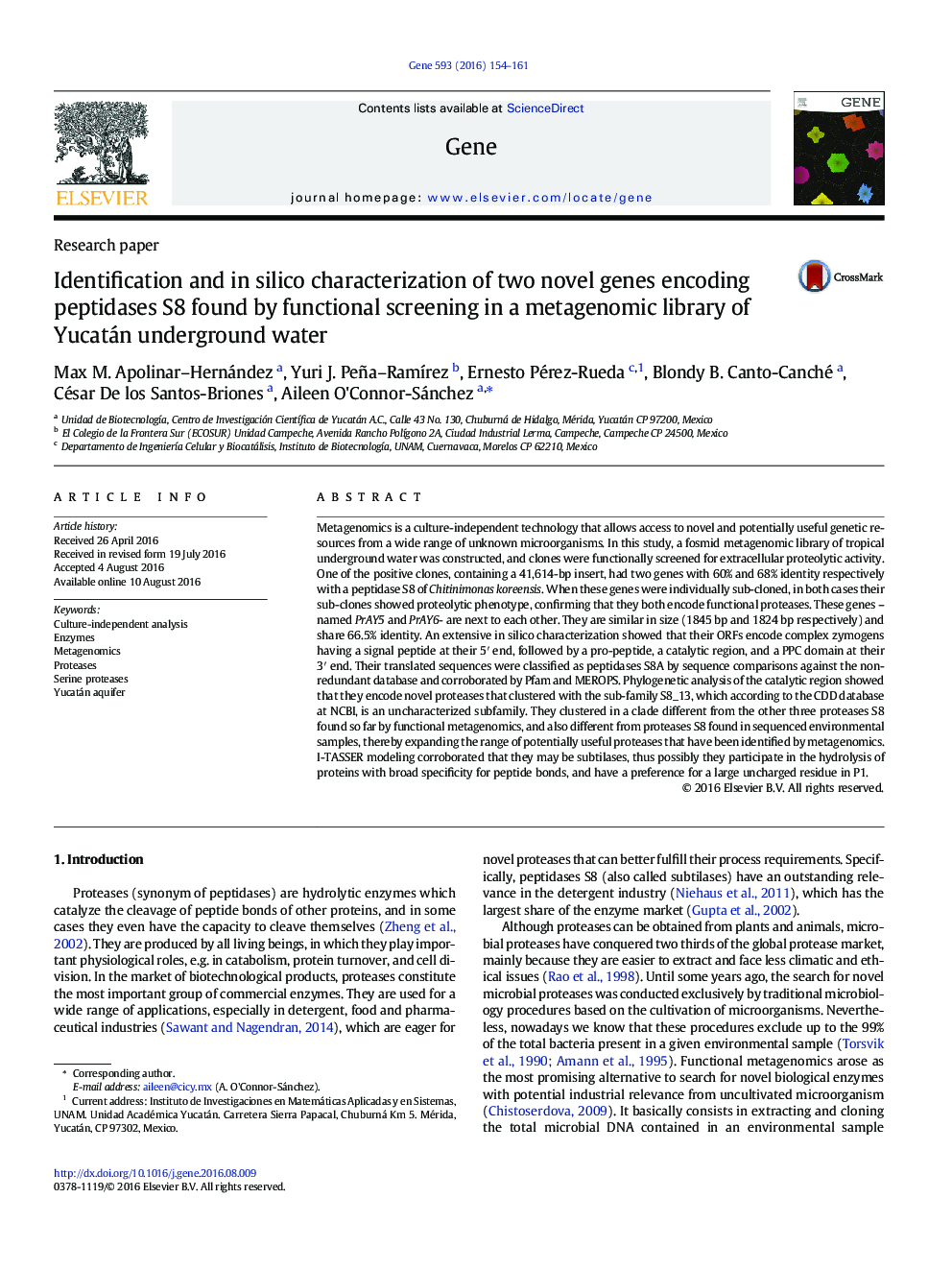| Article ID | Journal | Published Year | Pages | File Type |
|---|---|---|---|---|
| 2814745 | Gene | 2016 | 8 Pages |
•A fosmid metagenomic library of tropical underground water was constructed.•Two novel protease S8A genes were identified by functional screening.•An extensive in silico characterization showed that their ORFs encode complex zymogens.•Independent sub-cloning of these two genes showed that both encode functional proteases.•Modeling suggests that they encode subtilases which hydrolyze a broad range of peptide bonds.
Metagenomics is a culture-independent technology that allows access to novel and potentially useful genetic resources from a wide range of unknown microorganisms. In this study, a fosmid metagenomic library of tropical underground water was constructed, and clones were functionally screened for extracellular proteolytic activity. One of the positive clones, containing a 41,614-bp insert, had two genes with 60% and 68% identity respectively with a peptidase S8 of Chitinimonas koreensis. When these genes were individually sub-cloned, in both cases their sub-clones showed proteolytic phenotype, confirming that they both encode functional proteases. These genes –named PrAY5 and PrAY6- are next to each other. They are similar in size (1845 bp and 1824 bp respectively) and share 66.5% identity. An extensive in silico characterization showed that their ORFs encode complex zymogens having a signal peptide at their 5′ end, followed by a pro-peptide, a catalytic region, and a PPC domain at their 3′ end. Their translated sequences were classified as peptidases S8A by sequence comparisons against the non-redundant database and corroborated by Pfam and MEROPS. Phylogenetic analysis of the catalytic region showed that they encode novel proteases that clustered with the sub-family S8_13, which according to the CDD database at NCBI, is an uncharacterized subfamily. They clustered in a clade different from the other three proteases S8 found so far by functional metagenomics, and also different from proteases S8 found in sequenced environmental samples, thereby expanding the range of potentially useful proteases that have been identified by metagenomics. I-TASSER modeling corroborated that they may be subtilases, thus possibly they participate in the hydrolysis of proteins with broad specificity for peptide bonds, and have a preference for a large uncharged residue in P1.
